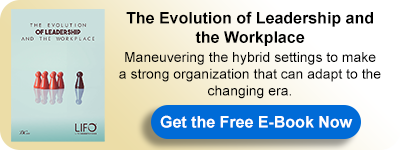Workplace Trends in 2022
The Evolution of Leadership and the Workplace
Much has been written about the dramatic changes in our working life over the last two years, fueled by necessity and safety concerns. For many of us, the pandemic is still a reality of life in 2022. However, it's fair to argue that we've learned to adapt to new behavioral patterns and expectations as we go about our occupations. Suppose we're among the millions of "knowledge workers" who now have more flexibility regarding when and where we work. In that case, we're hopefully taking advantage of the opportunity to create a better work-life balance. 1
Hence, the workplace has witnessed several trends and is still seeing more.
Workplace Trends in 2022
1. Working in a Hybrid Model
There will continue to be three significant models for working environments: centralized workplaces, decentralized, remote enterprises, and a hybrid "best of both worlds" approach.
What's likely to change in 2022 is that, rather than being forced to accept whatever model your corporation chooses out of necessity, we will have a choice.
The connection between organizations and the concept of a centralized workplace is definitely changing. According to KPMG research, at the height of the pandemic in 2020, 69 percent of large enterprises predicted an overall decline in the quantity of office space they would use.
According to a new analysis commissioned by video messaging platform Loom, 90 percent of employees surveyed – including workers and supervisors – are satisfied with the extra freedom they now have to work from home, indicating that this is a trend that will likely continue beyond 2022.
2. Workforce Supplemented by AI
According to the World Economic Forum, AI and automation will create 97 million new opportunities by 2025. People in many existing jobs, on the other hand, will see their positions change as AI technology is increasingly expected to boost their own abilities. Initially, AI will automate repetitive aspects of workers' daily tasks, allowing them to focus on areas that demand a more human touch, such as creativity, imagination, high-level strategy, or emotional intelligence.
3. Staffing for Resilience
Before the epidemic, the goal seemed to have been to hire people to assist in the creation of efficient organisations During and after the pandemic, the attention has shifted strongly to resilience. Built-in redundancy or skill overlaps were originally thought to be inefficient, but they are now seen as a wise precaution. Another sub-trend is that organizations recognize the crucial need to include employee healthcare and well-being (including mental health) plans into their overall strategy. Many businesses are attempting to take on more responsibility for aiding their employees in preserving their physical well-being, mental, and financial well-being. Firms will face a challenge in finding ways to accomplish this without being unduly intrusive or invasive of employees' privacy and personal lives is a challenge that firms will face in 2022.
4. Less Emphasis on Roles and Greater Emphasis on Skills
Skills are necessary because they address fundamental business issues and the competencies required in a workforce to handle them. On the other hand, roles explain how individual employees interact with the broader organizational structure or hierarchy. This trend has been brewing for a while, shifting toward more "flat" organizational structures rather than strictly hierarchical teams with a direct reporting, chain-of-command approach to problem-solving and communication. Firms may address the fact that solving challenges and answering basic business questions is the key to fostering innovation and success in information-age businesses by focusing on skills.
5. Monitoring and Analysis of Employees
Even though it is controversial, data reveals that businesses are increasingly investing in technology to monitor and track their employees' behavior to increase productivity. Managers overseeing remote workforces find platforms like Aware, which allows firms to monitor activity across email, and applications like Slack to gauge productivity, which is hugely beneficial.
Companies that invest in this technology must walk a tight line. It is unclear if the overall result will be a rise in productivity or a "chilling effect" on individual liberties. If it's the latter, the companies involved are unlikely to benefit. However, for better or worse, it appears that, by 2022, this type of technology will play a more significant part in the workplace.
1 Forbes, 22 Nov 2021, Bernard Marr, Future Of Work: The 5 Biggest Workplace Trends in 2022, Accessed 26 Jan 2022,
For more about this topic, download our latest book "The Evolution of Leadership and the Workplace " for FREE:
